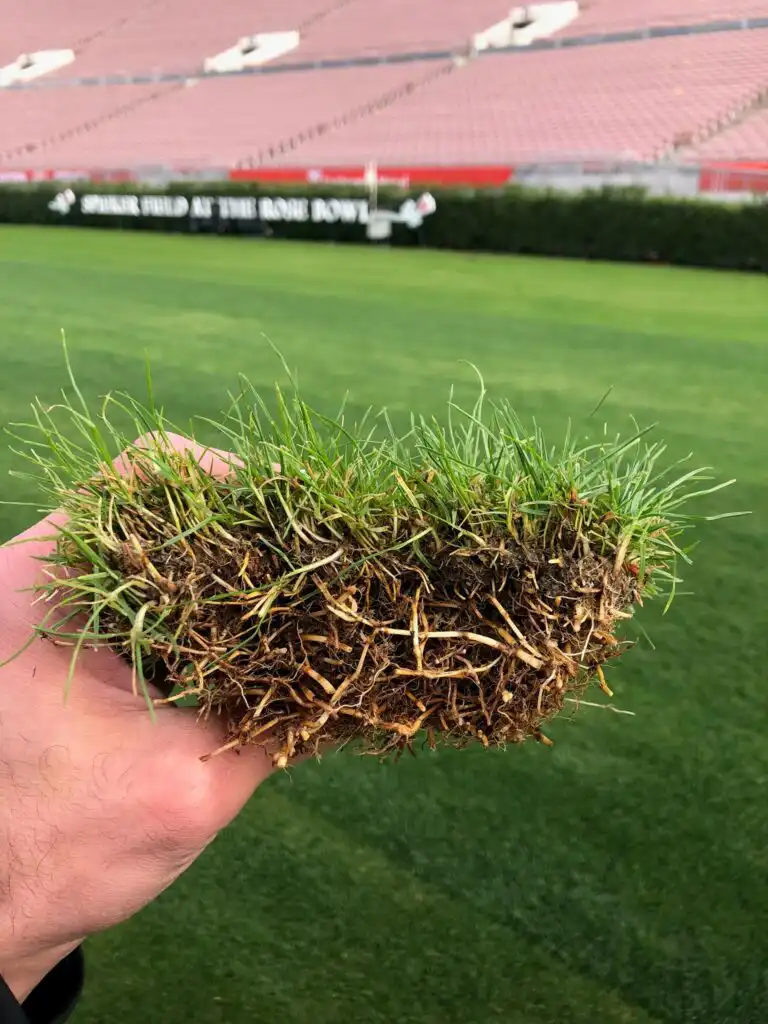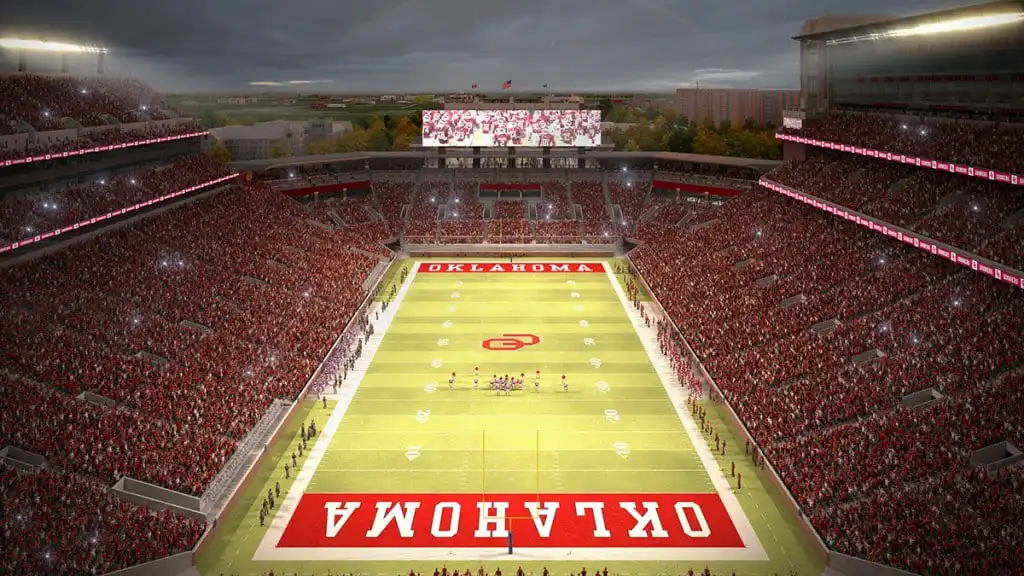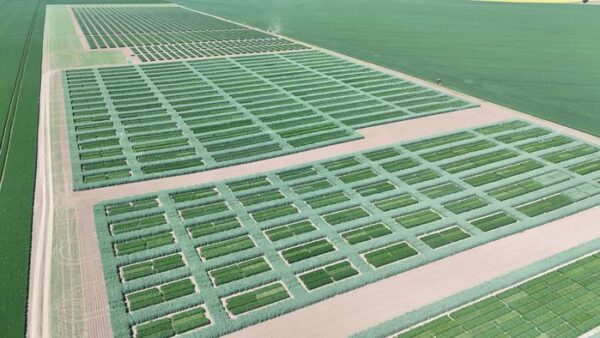Mowing down the competition takes effort, but breeding turfgrass for athletic fields brings a new, creative challenge to the industry.
Attitudes about the appropriate playing surface for athletic fields have evolved in recent years, resulting in the diminishing popularity of artificial turf, and an ascendency in the use of natural turfgrass thanks to its inherently greater safety for athletes and kindness to the environment. The creation of turfgrass varieties and blends that will enhance safety for the athlete while providing a durable and strong stand of grass is both a scientific and artistic challenge for turfgrass breeders.
“A plastic athletic field surface, heated by the sun, is akin to a slow burning tire fire,” says Adam Russell, director of product development, Mountain View Seeds. “Because of the hazardous chemicals in the fibers, infill, and padding of plastic surfaces, a natural surface is much more preferable for environmental friendliness and long-term human health.”
Research demonstrates that synthetic turf is unable to easily release players’ cleats in potential injurious situations.
“Natural turf breeding has reduced disease pressure, increased density to lower weed pressure, made grasses tougher to fight insects, and made grasses darker so they do not need as much fertilizer to look great,” says Gregg Munshaw, director of Agronomy, Pratum Seed Companies. “Turfgrasses today, through breeding, are 10 times better than they were just 10 years ago.”
“A number of key factors are important when breeding turfgrass for athletic fields,” says Crystal Fricker, president of Pure Seed and Pure-Seed Testing. “These factors include density, establishment, recoverability, tillering, traffic tolerance, root development and disease resistance to grey leaf spot, crown rust, stem rust and other problems.”
Breeding turf for sports turf is an elite market versus the home lawn market, says Fricker.
“We tend to focus more on multiple traits. Golf courses for example, have unique environments specific to their location,” she says. “Unique structural and environmental situations provide unique challenges to golf course superintendents and greenskeepers. We want to breed grasses that have persistence, which can withstand a variety of challenges. A key to our breeding is how can we beat up the grass the most and find the plants that can survive. We do that with traffic, disease, drought, and shade. We are always subjecting our plants to all of these pressures and trying to select the best of the best.”
However, Fricker notes that the plant still needs to be able to make seed. The biggest caveat? Sometimes the prettiest turf isn’t the best seed yielder, she says.
“When breeding turfgrass targeted for athletic fields and areas of high use, the key characteristics we aim for are uniformity (for an even, playable field), density (for a thick and sturdy playing surface and to reduce weeds that may cause twisted ankles), traffic tolerance and recovery,” says Alyssa Cain, turf product manager, Barenbrug USA.
Other characteristics of concern are color, leaf texture, mowing quality, leaf texture, disease and insect tolerance, regional performance and quality.
“There is a fine balance between turf canopy stability and ‘breaking loose’ at the right force/torque that must be bred for and managed to minimize the risk of major injuries,” says Brian Schwartz, professor, Department of Crops and Soil Science, University of Georgia. “Our group developed a traffic simulator to help with this, but we really rely on athletic turf management professionals, sod farmers and others to help with this process. Indirectly, we have selected for a more stable turf canopy, as well as genetic recuperative potential, when beating up our research plots with the Baldree Traffic Simulator. A heavy rhizome system seems to be key, as well as a dense leaf canopy.”
When it comes down to it, there’s a lot of factors to be concerned with in breeding for sports fields. So, what’s the best fit?
Athletic Turf Suitability
What grasses make the best turf for athletic fields? Responses from breeders to this question are quite varied.
“My warm-season breeding program focuses on bermudagrass, although we have initiated a zoysiagrass breeding effort for athletic fields,” says Schwartz. “Different sports have different requirements, and the various levels of amateur versus professional play dictates most of what is deemed ‘acceptable.’ Something that we should spend more time on would be the interaction of a bermudagrass/zoysiagrass base with ryegrass overseed.”
In comparison, Mountain View Seeds takes a different approach to their fields: combining different species to get one perfect fit.
“We like poly stands,” says Russell. “We always try to use multiple species to maximize the inherent benefits of each species in the blend for the playability and safety of the turfgrass.”
“Monostand use in turfgrass is declining, because turf managers have become more open to incorporating mixtures that can make their fields better able to withstand heavy use,” Munshaw says.
Mountain View Seeds is the official seed supplier of the Rose Bowl in California. Russell says the grass used in the stadium is a Bluemuda ploystand — it includes Bermudagrass for strength, durability and traffic tolerance, and Kentucky bluegrass that is overseeded into the Bermuda. Ryegrass is sometimes mixed in.
“Varieties that are widely adapted do well as sports turf in a variety of geographies and environments,” says Fricker. “They are better adapted to take whatever is thrown at them and survive.”
Fricker says perennial ryegrass for sports fields is dominant worldwide with 5-10% bluegrass blended in.
“This combination is excellent because it gives you better density, better rhizomes for recoverability and better shade performance,” she says. “The type of bluegrass selected for shady growth can make a huge difference.”
It’s also important not to over manage, says Sorochan. Mowing too short and trying to push growth with high nitrogen rates decreases rooting and yields grasses that are more succulent.

Breeding for Resistance
Turf grasses are susceptible to several diseases that grab the attention of breeders.
Sorochan believes the biggest disease issues for sports turf are:
- Bermudagrass, spring dead spot
- Kentucky bluegrass, summer patch
- Perennial ryegrass, Pythium blight, grey leaf spot, Rhizoctonia (brown patch)
- Zoysiagrass, Rhizoctonia (large patch)
Schwartz says that breeding for resistance is usually different in seed-propagated versus vegetatively-propagated cultivars. “Pathogens typically overcome new resistance over time as races/populations shift and mutations happen. When you add in the wear and tear of sporting events, maintaining healthy turf over time can be a challenge.”
“Breeding for a particular disease tolerance takes a long time due to the disease pressure peaking once or twice per year,” says Cain. “That is when we can really test our material.
“While we aggressively work on some specific economically important traits, our breeding efforts tend to focus primarily on breeding a grass that has as many of the desirable attributes as possible,” Cain adds. “Regardless of end use, we expect our varieties to have excellent disease tolerance, color, density etc. We then proceed to scrutinize these high-quality experimental varieties under different scenarios. This tends to be where we can determine end use.”
Experimental varieties that have exceptional traffic tolerance could end up geared towards the athletic field markets while those that tolerate low mow heights may end up being advanced for the golf market.
A New Tool
Breeding turfgrasses relies on traditional methods for developing improved species and varieties as there is reluctance amongst the public to accept plants and seeds that have been subjected to some form of genetic modification.
However, Munshaw reports that researchers at North Carolina State University have developed a new way to get CRISPR/Cas9 into plant cells without inserting foreign DNA. This allows for precise genetic deletions or replacements with the end product not being a genetically modified organism (GMO).
Specifically, CRISPR/Cas9 is a tool that can be used to precisely cut and remove or replace a specific genetic sequence. The Cas9 protein serves as a pair of molecular scissors, guided to the specific genetic target by an easily swapped RNA guide.
In a recent study, Wusheng Liu, a plant biologist and biotechnologist in the Department of Horticultural Science at North Carolina State University, demonstrated a new way of introducing the Cas9 protein and guide RNA into plant cells, which does not involve foreign DNA.
“This was the first time anyone has come up with a method to deliver the Cas9 protein through lipofection into plant cells,” Liu says. “Our major achievement was to make that happen.”
Thoughtful Breeding Efforts
Breeding turfgrasses for athletic fields and various sporting activities is usually a bit different than breeding for the home lawn.
“For our breeding program,” says Schwartz, “the difference lies in the final selection pressure for specific situations. We don’t test all 5,000 new hybrids we make each year for wear tolerance. We narrow the number that we eventually trial by first selecting for adaptation to Tifton, then for drought tolerance, then for mowing response. Only then would we trial the top 10-50 hybrids from each round of crossing for athletic field use.”
The final difference, Schwartz says, is the collaborators you work with towards the end. “For example, we would try to put out a few experimental athletic fields prior to release.
In an aside, Schwartz says breeding for shade tolerance has been more important than he would have expected, as some of the most high profile stadiums have seating that casts a fair amount of shade.
“Low light intensity and poor air movement in sports arenas can cause additional disease pressures,” says Fricker. “In shady areas, the grass can be weakened by etiolation as it reaches for height.”
As sports organizations, municipalities and others move away from artificial turf, the demand for tough, resistant and durable grasses will provide an unrelenting market for the seeds developed by private and public turfgrass breeders.
“The amount of testing and development that goes on before a variety goes to market is a years-long, capital intensive effort aimed at offering end users a proven product,” Cain says. “It is common for this process to take over a decade.”
If turfgrasses today, through thoughtful breeding, are 10 times better than they were 10 years ago, it will certainly be interesting to see where turfgrasses will be ten years from now.
In Case You Missed It
The Turf May Be Artificial, but the Issues Are Real











